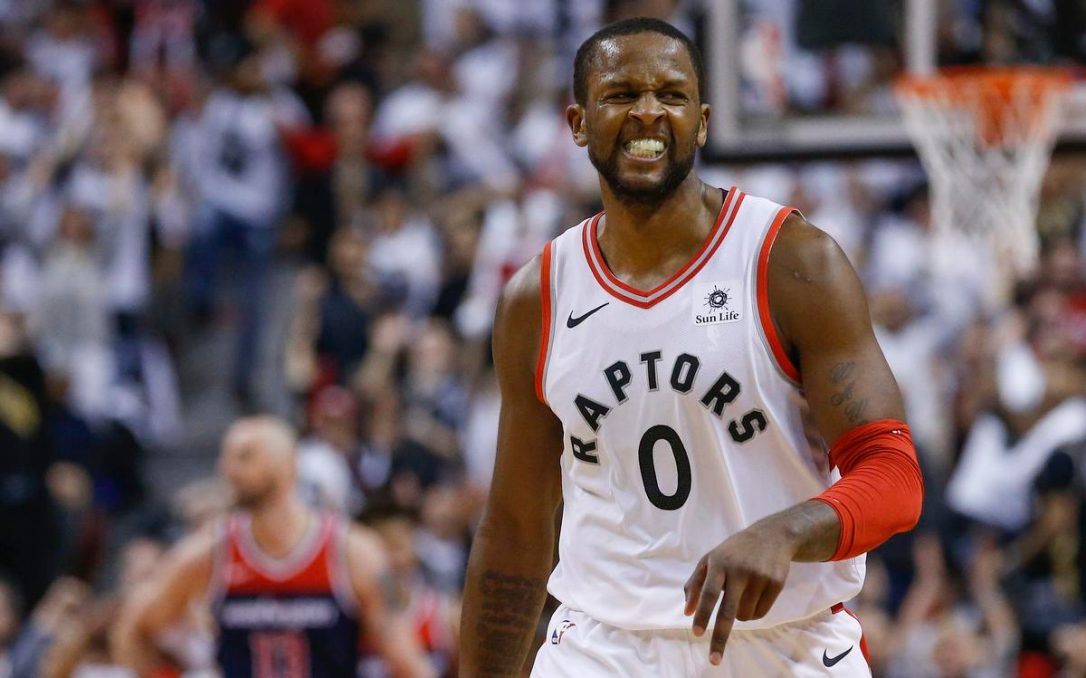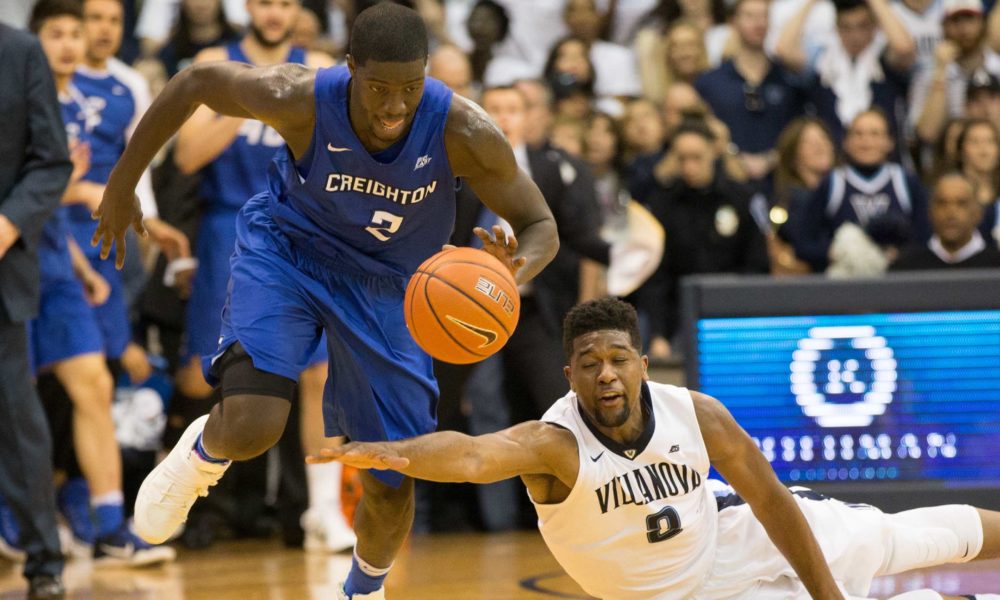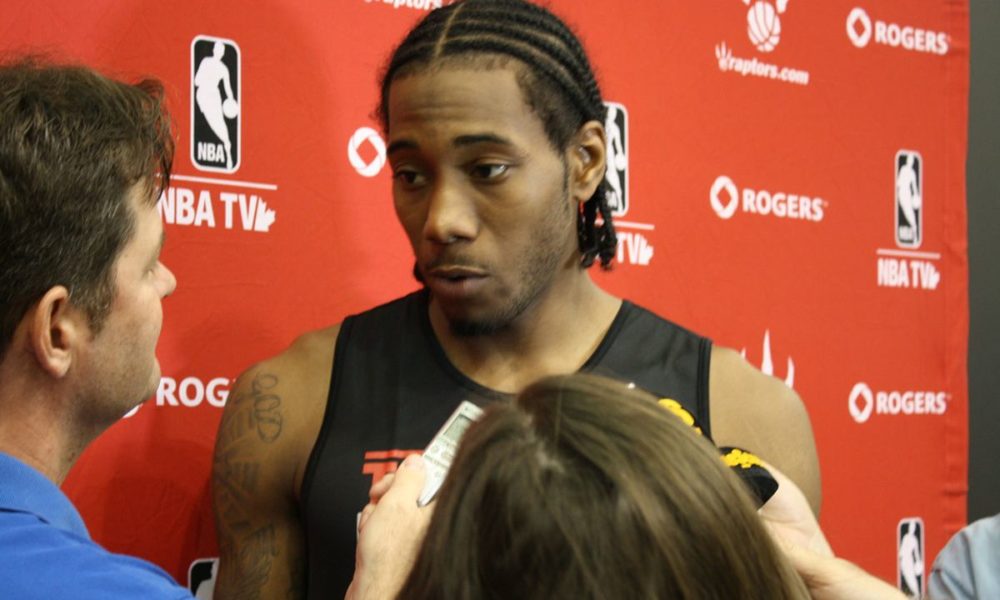You can keep up with all of our player reviews here.
When we look back at the Toronto Raptors offensive reinvention that dominated headlines throughout the 2017-18 season – at least in Canada – we’ll remember the various players that altered their games for the betterment of the team.
DeMar DeRozan became a more willing passer and a confident, albeit below-average shooter from long-range. Once a few treys started to fall, opponents had to start respecting DeRozan’s range, which in turn opened up more driving lanes for both him and his Raptor teammates.
After initial speed bumps, Kyle Lowry learned to thrive offensively without the ball and quietly put together another all-star caliber season. His comfort level within the team’s offence increased as the season progressed, and it showed in his improved efficiency.
Jonas Valanciunas evolved from a slow-footed, back-to-the-basket, pump-fake loving big man into a dual-threat offensive option, one with the ability to knock down shots behind the 3-point arc (!!!) and drive into the paint, depending on what the situation called for and which coverages defences unintentionally botched.
While many Raptors players zigged, altering their games to fit the mold of a new offensive system, off-season trade acquisition C.J. Miles zagged by sticking to the way he’s always played: Free-flowing, trigger-happy basketball. It wasn’t hard for a player with a style like Miles’ to fit in, especially given the club’s immediate need for an uptick in 3-point makes and attempts. Shipping out nearly half of the team’s total 3-pointers last summer, coupled with the Raptors desire for a pace-and-space offensive style, made Miles’ presence a near-necessity. Raptors president Masai Ujiri’s last notable attempt at acquiring a sharpshooter disappointed, with DeMarre Carroll never contributing anything of substance in a Raptors uniform. This time around, Ujiri struck gold with a clear upgrade.
Miles ultimately didn’t make a difference in the Raptors’ attempt at defeating their playoff kryptonite – the Cleveland Cavaliers – but did play an integral role in molding the identity of the regular-season Dinos. He was a vital component of the team’s inexperienced second unit, in particular. The combination of Miles, Fred VanVleet, Delon Wright, Pascal Siakam, and Jakob Poeltl surprisingly lit the league on fire as Toronto’s second-most utilized five-man rotation, outscoring opponents by 18.5 points per 100 possessions. The Raptors’ bench also owned the league’s highest net rating among second units at 8.3 and gained notoriety league-wide as the team’s win kept on growing. The iteration of the ‘Bench Mob’ featuring Miles unsurprisingly took over 40 percent of its shot attempts from 3-point range, which proved to be a formula that improved the group’s success.
The threat of Miles’ rapid shot release and ability to catch fire from distance at a moment’s notice was a nuisance for opponents all season. Teams had to make a difficult choice possession-by-possession with Miles on the court: Do you rush out to the perimeter to contest his jumper and risk over-helping and leaving at least one Raptor open, or just let him keep shooting 3-pointers and hope for the best? Miles’ long-range threat predictably opened up high-percentage scoring opportunities for teammates, which they tended to capitalize on.
Miles’ season averages of 10 points per game on 37.9 percent shooting and 36.1 from 3-point range don’t jump off the page, but they never really have in his career; he’s not the type of player to evaluate based on scoring averages anyway. Whenever he was on the floor, Miles was a terrific decoy that kept defences guessing. As a defender, you simply could not leave him open, ever. If left unchecked, you risked suffering the consequences.
The volume in which Miles shot from beyond the arc was his most distinctive attribute in his first season north of the border.
During the regular season, C.J. took a whopping 454 3-pointers, the highest single-season total thus far in his career. His second-highest total of 3-point attempts prior to that was 446 back in ’14-15, but it took him 504 more minutes to accomplish the feat that campaign.
This past season, Miles attempted 599 field goals across 70 games, which means that nearly 76 percent of his shots were taken from the land beyond. To provide further context, Miles took the ninth-highest percentage of total field goal attempts from 3-point range among players that averaged at least 15 minutes per game. Within that same crop of players, he ranked 10th in percentage of points scored from 3-point range at 70.4.
Let’s touch on Miles’ defence quickly. To keep it short and sweet, C.J. proved to be a very average defender; he rarely stood out as a weak spot, but certainly didn’t provide much on that end, either. Miles’ strong work ethic on the defensive end was apparent, but unfortunately his lack of lateral quickness often times hindered him against opposing athletic small forwards or power forwards. Luckily, the Raptors don’t have to rely on Miles guarding an opponent’s top player, given OG Anunoby is more than capable of thriving in that role.
Going forward, expect similar production from the marksman. If there’s one thing we’ve learned over the veteran’s career, it’s that make or miss, Miles will continue launching threes. His NBA career has, and always will, depend on that element of his game. Under new head coach Nick Nurse, Miles will likely see an uptick in 3-point attempts next season. Nurse is known around NBA circles as an innovative thinker and given the increase in long-range shooting over the past half-decade, you can bet the Raptors’ bench boss will try to continue evolving that trend even further using Miles as his primary test subject. Depending on whether Fred VanVleet re-signs with Toronto or not will likely impact Miles’ minutes and production next season, too.



